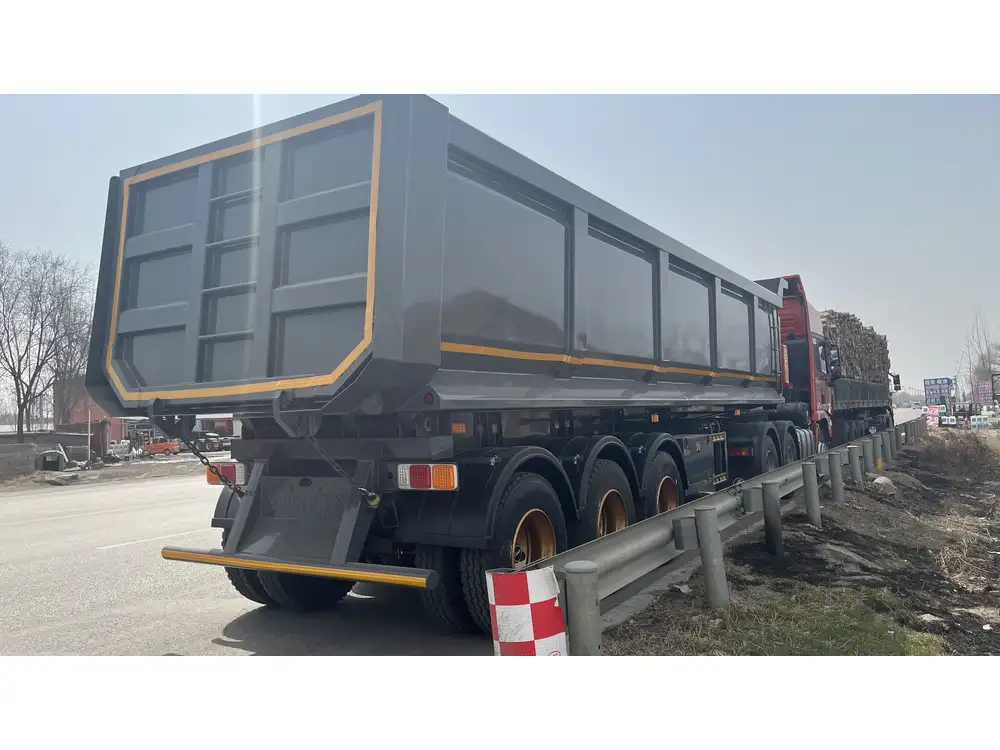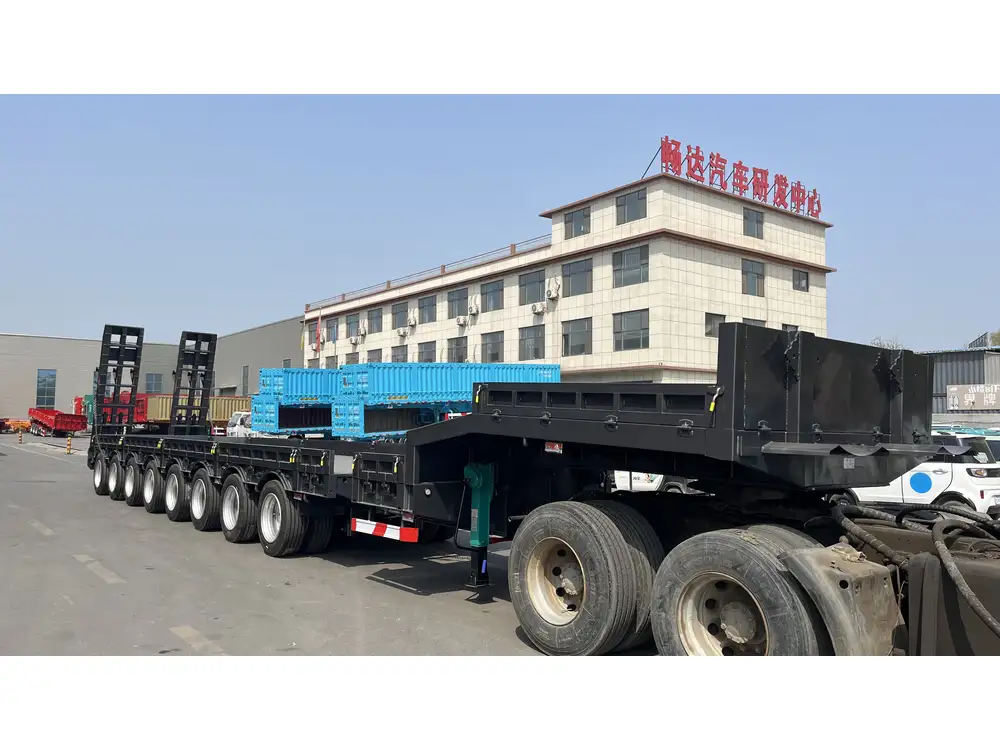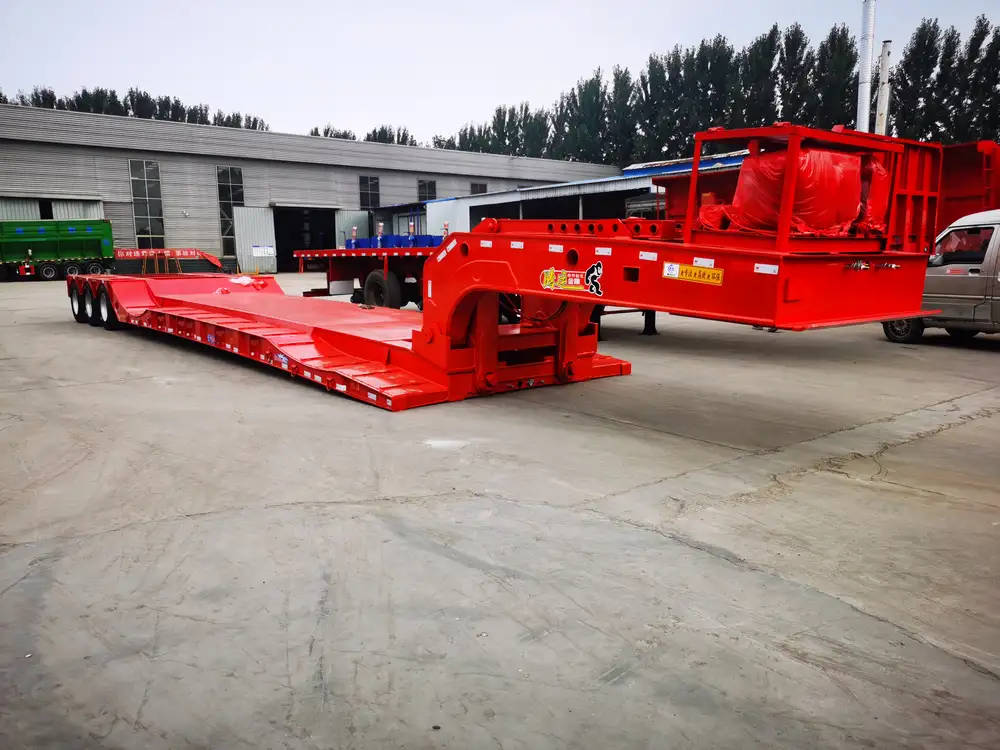When considering the transport of goods, understanding the specifications of semi trailers, particularly flatbed trailers, is crucial for both manufacturers and users. One prevalent question within this realm is: How much does a semi flatbed trailer weigh? This query intertwines with factors such as load capacity, material types, and design variations. To address these considerations comprehensively, we will analyze the weight characteristics, influencing factors, and operational implications of semi flatbed trailers.
Understanding Flatbed Trailers
Flatbed trailers are versatile and widely used in the transportation sector, primarily for hauling large, heavy loads that require easy access from all sides. They are known for their open design and lack of side and rear walls, facilitating loading and unloading operations that are not confined to a specific entry point.
Structure and Composition
The construction of a semi flatbed trailer typically involves:
- Frame: Made of high-strength steel or aluminum, ensuring durability and robustness.
- Deck: Usually plywood or composite materials, treated for weather resistance.
- Axles: Often equipped with dual or triple axles to support heavy loads and distribute weight evenly.
- Suspension System: Air-ride or spring suspension systems for better load stability and shock absorption.
With these elements, flatbed trailers provide an efficient means of transporting goods while being capable of supporting considerable weight.

What Affects the Weight of a Semi Flatbed Trailer?
1. Material Composition
The weight of a semi flatbed trailer is primarily influenced by the materials used in its construction. Here’s a quick overview:
| Material | Characteristics | Typical Weight Contribution |
|---|---|---|
| Steel | Strong but heavy | 8,000 – 10,500 lbs |
| Aluminum | Lightweight and corrosion-resistant | 5,000 – 7,000 lbs |
| Composite | Maintenance-free and lightweight | 5,500 – 8,500 lbs |
2. Trailer Length and Design
The trailer’s dimensions play a critical role in determining its overall weight. Common dimensions for semi flatbed trailers include:
- 48 feet: Standard weight range is approximately 10,000 lbs.
- 53 feet: Typical weight may vary from 12,000 to 13,500 lbs.
The design can also diverge into specialized configurations, such as drop decks or extendable trailers, further influencing weight.

3. Axle and Suspension Configuration
The number of axles directly affects the weight capacity a trailer can handle. Trailers generally come with two, three, or more axles:
- Dual Axles: Tend to weigh less, usually around 10,000 – 12,000 lbs.
- Triple Axles: Support more weight but add extra mass, totaling up to 15,000 lbs.
Different suspension types also add to the overall weight of the trailer:
- Leaf Spring Suspension: Typically heavier due to rigid construction.
- Air Suspension: Generally lighter and often preferred for enhanced load management.
4. Additional Features
Additional components such as toolboxes, tarps, stakes, and winches can add weight to the chassis. The inclusion of a tool compartment alone can range from 100 to 300 lbs, impacting weight calculations.
Average Weights of Popular Semi Flatbed Trailers
Here’s a consolidated table illustrating various types of semi flatbed trailers and their average weight ranges:
| Trailer Type | Average Weight Range |
|---|---|
| Standard Flatbed | 10,000 – 13,500 lbs |
| Lowboy Trailer | 12,000 – 15,000 lbs |
| Step Deck Flatbed | 10,500 – 14,000 lbs |
| Extendable Flatbed | 12,000 – 16,000 lbs |

Weight Implications for Transportation
Understanding the weight of a semi flatbed trailer is not merely academic; it has profound implications in practical transportation scenarios.
1. Load Capacity and Legal Limits
The total weight permissible on highways is regulated by law, including both the empty weight of the trailer and the weight of its cargo, often referred to as Gross Vehicle Weight Rating (GVWR). Failure to adhere to these regulations can result in fines and operational inefficiencies.
2. Fuel Efficiency
The weight of a trailer significantly impacts fuel consumption. Heavier trailers require more power from the haul truck, leading to decreased fuel efficiency. For instance:
- Lightweight trailers can improve mileage up to 10%.
- Heavier configurations can reduce mileage significantly, costing both time and money on longer hauls.

3. Stability and Handling
The distribution of weight across the trailer can affect the stability of the vehicle during transit. An overloaded or misbalanced trailer poses challenges, including:
- Increased wear on tires and brakes.
- Diminished maneuverability and braking distance.
- Enhanced risk of sway during sharp turns or adverse weather.
4. Maintenance Considerations
Heavier trailers often require more maintenance due to the stress induced on structural components. Regular inspections of the frame, axles, and suspension systems become paramount to ensure safety and longevity.
How to Calculate the Weight of Your Semi Flatbed Trailer
Calculating the weight of a semi flatbed trailer is straightforward. Utilize the following method:
Find the Manufacturer Specifications: Most manufacturers provide the unladen weight (the weight of the trailer alone) in the owner’s manual or specification sheet.
Weigh the Trailer: If unavailable, take the trailer to a certified truck scale for a precise measurement.
Add the Payload Weight: Include the weight of your cargo to arrive at the total weight.

Example Calculation
- Unladen weight of the trailer: 12,000 lbs
- Weight of cargo: 20,000 lbs
- Total weight for legal considerations: 32,000 lbs
Conclusion
Understanding the weight of a semi flatbed trailer is integral to efficient cargo transportation. The interplay between material composition, design features, axle configuration, and load capacity must be meticulously evaluated for optimal operations. This knowledge directly influences regulatory compliance, fuel efficiency, handling, and maintenance dynamics.
For manufacturers and users alike, making informed choices regarding trailer weight can yield significant benefits, ensuring safety, compliance, and operational effectiveness. As the transport industry continues to evolve, maintaining awareness of these facets will empower stakeholders to maximize their operational capabilities effectively.



